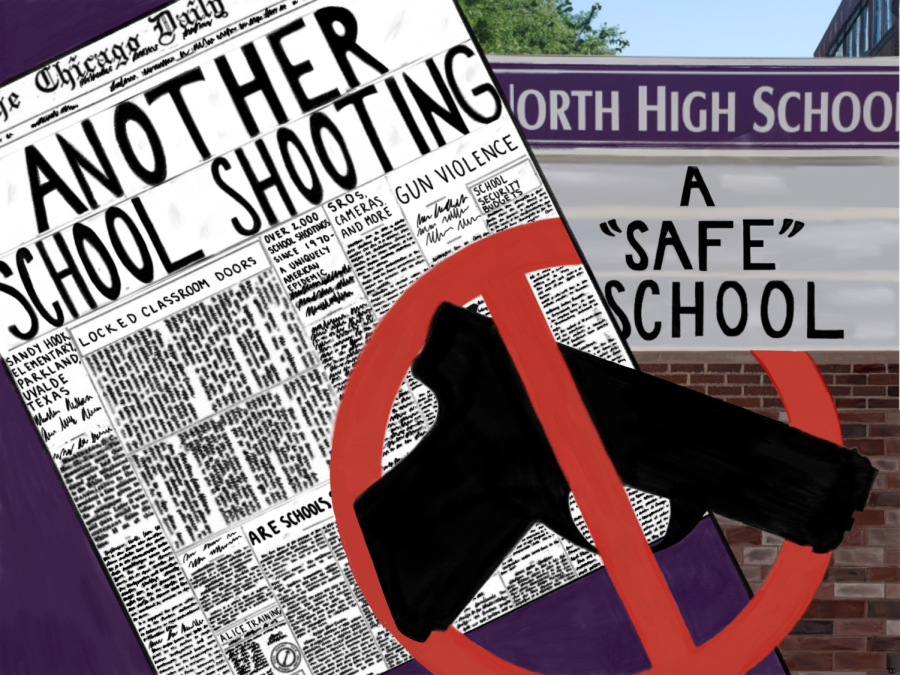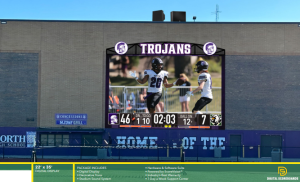Security additions shed light on societal gun violence
October 4, 2022
As I marched into DGN, a Hawaiian shirt proudly flaunting my senior status, I felt a strange and foreign discomfort. I ignored the feeling throughout the first day of school, hoping it would dissipate like my other unfounded anxieties. Tuesday morning arrived, however, and my mild fear hardened into dreadful knowingness.
This year, every classroom door locks into place with a deafening thud. Security guards pace the halls in numbers larger than I recall from years prior. School exits and entrances are forever closed to the public. ID usage is more heavily enforced.
These security additions are only small changes – minor inconveniences throughout our day – and yet, they mask a much darker trend. According to Sandy Hook Promise, the United States has endured over 2,000 school shootings since the Columbine incident, attacks that endangered the lives of 300,000 students. Perhaps more frighteningly, the New York Times reports that 130 school shootings have already occurred in 2022.
Of course, District 99, like every other school, assures students that they’re safe. During our state-mandated ALICE training, a nationally recognized emergency response protocol, the voice of an administrator bravely proclaimed, “DGN is a safe school.” National statistics, however, say something else about the efficacy of school safety protocols.
With 28 recorded deaths, Sandy Hook Elementary School was home to the world’s deadliest K-12 school shooting. According to Brittanica, the elementary school invested in a variety of safety measures prior to the event.
Locked entrance doors, a public address system, and lockdown protocols, however, were no match for the perpetrator’s AR-15, semi-automatic pistols, and several hundred rounds of ammunition. It took the shooter less than a minute to breach the entry. Five minutes later, he had claimed 26 lives.
This disturbing story barely scratches the surface of a fact often ignored by lawmakers and gun rights activists; research suggests that rarely, if ever, do properly implemented security measures prevent gun violence in schools.
Parkland High School, for example, endured a deadly school shooting despite constant police presence on campus. Even Robb Elementary school, infamously known for its lack of safety precautions, required locked doors and emergency response training prior to the Uvalde Texas shooting.
On the surface, it makes sense that DGN has increased school security to combat threats of violence and possible shootings. After all, I grew up in the era of shelter-in-place; I’m accustomed to in-school safety drills, so these security additions shouldn’t phase me.
However, these additions do phase me, just like how shelter-in-place conditioned me to fear for my safety during a first-grade math lesson or a third-grade read-aloud. No high schooler should grow accustomed to the threat of school shootings, let alone a 6-year-old.
Now more than ever, school shootings are tangible, closer to home. Our school’s program drills that teach young, impressionable minds to expect gun violence, a threat so fearsome it seems like it was extracted from a child’s nightmare.
And yet, it’s a nightmare our society has watched devolve into reality- into a deadly epidemic that can be solved not through reactionary security measures but through preventative risk assessments and stricter gun regulation.


























